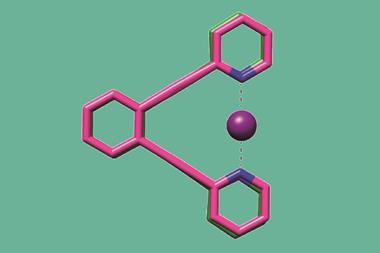Chemical bonds continue to fascinate chemists – and bring us together too
Hardly an issue – or even a week – goes by without us publishing a story about new, unexpected or simply odd chemical bonds. We’ve recently covered a beryllium–beryllium double bond predicted by Chinese researchers and group two elements forming 18-electron complexes with carbonyl ligands, using their d orbitals against all expectation.

In our daily news meetings, the Chemistry World team refers to these stories as ‘freaky bonding’ – with affection of course. We love them, and it looks like you readers do too: our research stories on bonding often climb the list of most popular articles on our website and get shared widely and enthusiastically on social media too.
Any why not? After all, chemical bonds are one of the things that chemists of all disciplines share a common understanding of. More than that, they’re a concept that people who left chemistry behind in the classroom can still remember and grasp, however loosely.
It’s more unexpected that chemists are still capable of surprising each other with new bonds, or ever shorter, longer, stronger or weaker ones. It’s been about a century since our understanding of bonding took on its modern form, and how many countless chemists have been investigating them since then? And yet here we are in the 21st century, still uncovering unexpected ways for two (or more) atoms to join together.
An understanding and perhaps even a feel for what bonding means is a crucial thing for all chemists. I can almost trace my chemical education through an evolution of my knowledge of bonding, starting with pencilling in crosses and dots on photocopied sheets of atomic orbitals in a school science class through to molecular orbital diagrams and scratching my head over superexchange through metal oxide bonds in the magnetic materials I made in my PhD.
But what do bonds and bonding mean to you? Probably something totally different to the examples I gave above, because your own learning and research experiences will inevitably colour your perception. Whether you spend your time thinking about regular carbon–carbon bonds, mechanical bonds, non-covalent interactions or just how two hydrogen atoms come together, chemical bonds are what bond chemists together too.












No comments yet